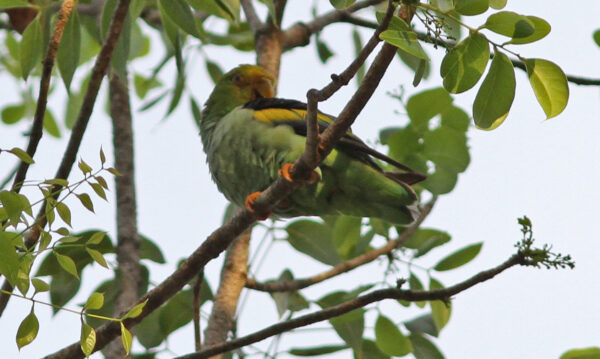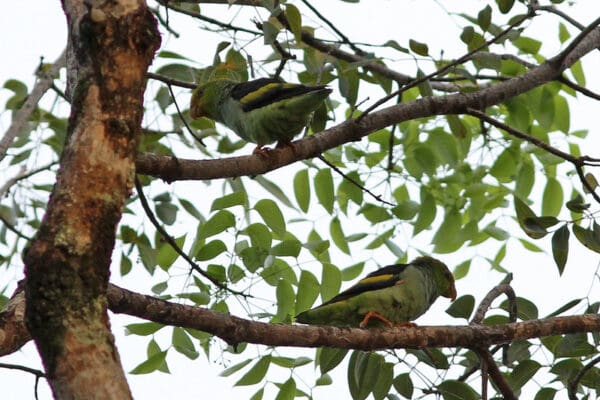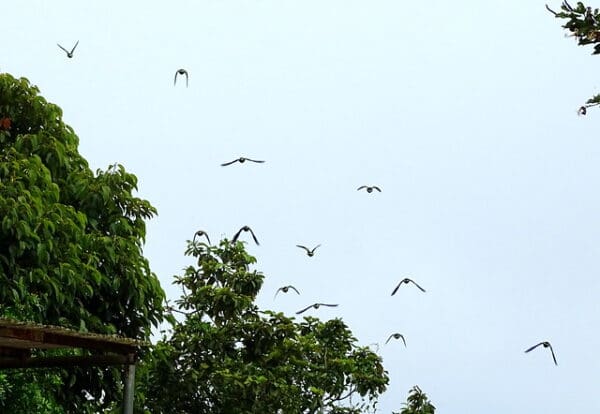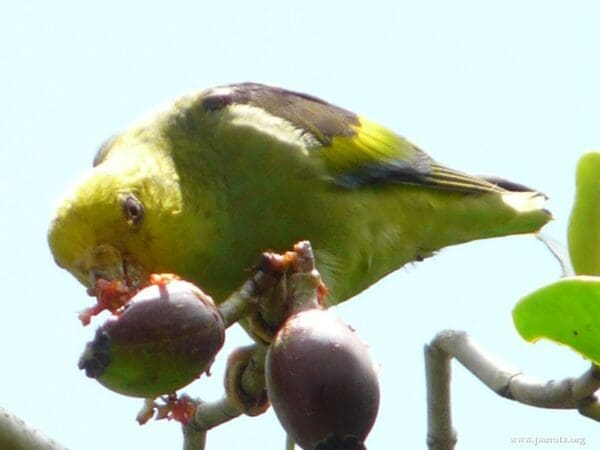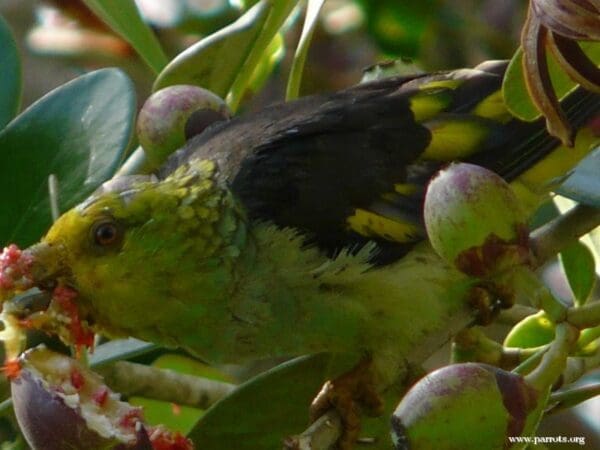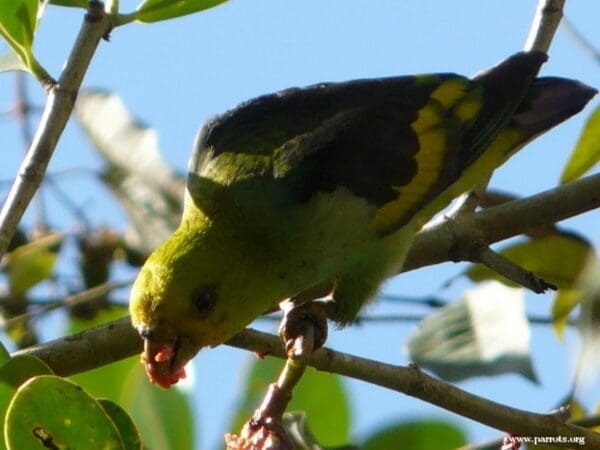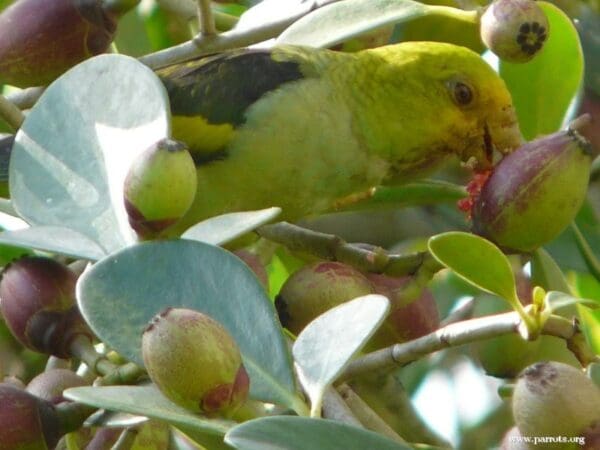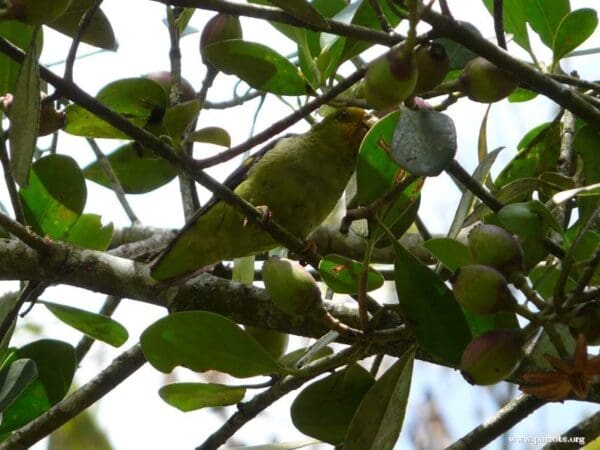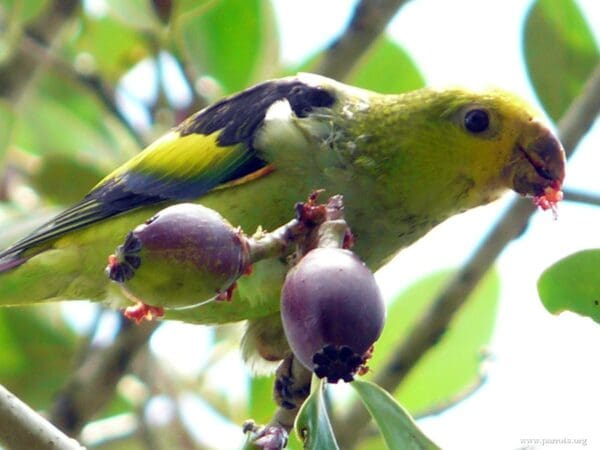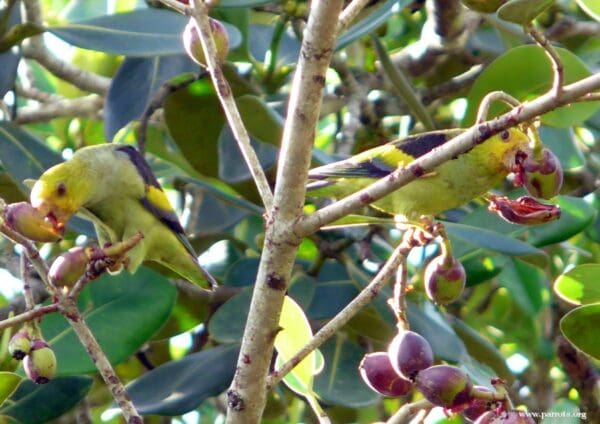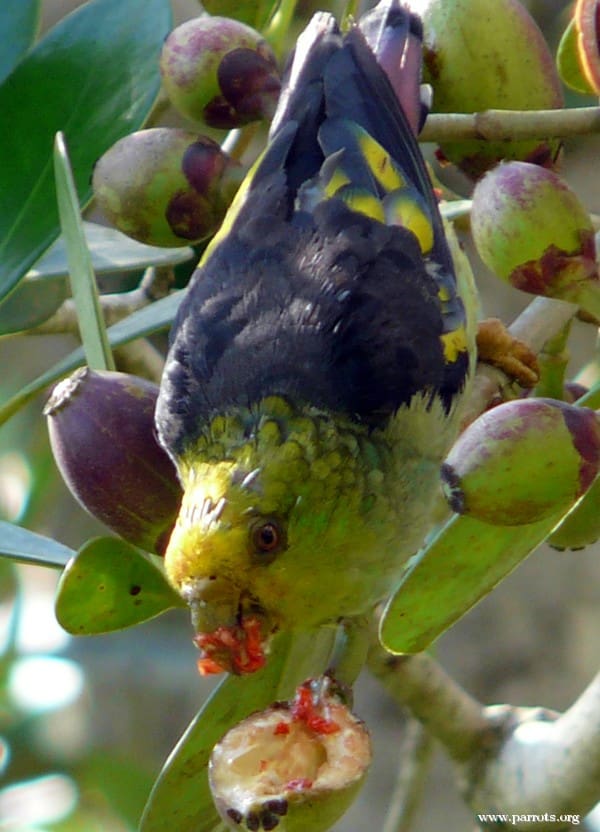Lilac-tailed Parrotlet
Also known as:
Seven-colored Parrotlet, Black-winged Parrotlet, Scopoli's Parrotlet
Also known as:
Seven-colored Parrotlet, Black-winged Parrotlet, Scopoli's Parrotlet
![© Dave Curtis [CC BY-SA 2.0] via Flickr A wild Lilac-tailed Parrotlet preens](https://gt2024.parrots.org/wp-content/uploads/1990/06/Lilac-tailed-Parrotlet-Dave-Curtis-e1732054491703-100x100.jpg)
![© Dave Curtis [CC BY-SA 2.0] via Flickr Wild Lilac-tailed Parrotlets perch in a leafy tree](https://gt2024.parrots.org/wp-content/uploads/2023/01/wpt_Lilac-tailed-Parrotlet_1381-11-100x100.jpg)
![© barloventomagico [CC BY-SA 2.0] via Flickr A small flock of wild Lilac-tailed Parrotlets flies above the canopy](https://gt2024.parrots.org/wp-content/uploads/2023/01/wpt_Lilac-tailed-Parrotlet_1381-10-100x100.jpg)
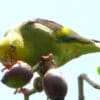
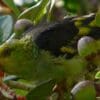
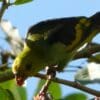
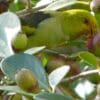
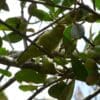
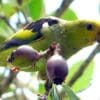
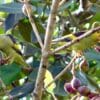
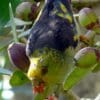
DID YOU KNOW?
The Lilac-tailed Parrotlet nests in an arboreal termitarium (termite mound in a tree).

Touit

batavicus
Size:
14 cm (5.5 in)
Weight:
58-72 g (2-2.5 oz)
Subspecies including nominate:
one
Colour Adult:
Both adults green/yellow head; brighter yellow with black scalloping on face and nape to sides of neck; black upperparts; rose/red carpal edge; pale blue foreneck tinted green; pale blue/green breast mixing into yellow/green on abdomen to undertail coverts; blue underwing coverts marked with yellow and red near to carpal edge and bordered with black along leading edge; purple central tail feathers; lateral tail feathers purple/lilac and barred with black near tip. Beak olive/yellow with grey at base. Eye ring grey. Eye yellow.
Colour Juvenile:
As in adults.
Call:
Calls made in flight are soft and nasal, rising to a high-pitched, whining sound. Before taking flight emits weak, nasal calls, and short trilling or chattering notes.
More Information:
Content Sources:
CITES
BirdLife International
Cornell Lab of Ornithology/Birds of the World
Parrots: A Guide to Parrots of the World, Juniper and Parr, 1998
Parrots of the World, Forshaw and Cooper, 1989. 2010 edition
Parrots of the World, Forshaw, 2006.
Parrots in Aviculture, Low, 1992.
Captive Status:
Uncommon; held in the European Union.
Longevity:
—
Housing:
Keep indoors in minimum temperature 20 C (68 F), minimum length 2.1 m (7 ft).
Diet:
Lory formula; flowers and buds; tropical fruits such as: mango, guava, papaya; other fruits such as: apple, pear, oranges, pomegranate, cactus fruits; vegetables such as: carrot, celery, green beans and peas in the pod; green leaves such as: Swiss chard, lettuce, sowthistle, dandelion, chickweed; fresh rose hips, elder and mountain ash berries; sprouted seed mix of safflower, millet, oats, hemp and some sunflower; mineral supplements; fresh non-toxic branches.
Enrichment:
Provide unsprayed, bird-safe variety of branches.
Nest Box Size:
—
Clutch Size:
5-6
Fledging Age:
—
Hatch Weight:
—
Peak Weight:
—
Weaning Weight:
—
World Population:
Unknown but described as fairly common, decreasing.
IUCN Red List Status:
Least Concern
CITES Listing:
Appendix II
Threat Summary:
Not globally threatened. Relatively common on Trinidad. Heavily traded in Venezuela; one source describes it as difficult to keep in captivity due to high mortality. Some habitat loss occurring in its range.
Range:
Trinidad, Guianas, and possibly Amapa, N Brazil; also scattered across N Venezuela, reaching N Colombia.
Habitat:
Found up to 1700 m (5576 ft) in primary forest or taller secondary growth in tropical and subtropical zones; also may be seen lower down at forest edge and at clearings in dry deciduous and humid forest.
Wild Diet:
Feeds on flowers, nectar, buds, berries, seeds and fruits.
Ecology and Behaviour:
Seen generally in flocks of 10-30 individuals or more outside breeding season. Highly social when feeding and at roost. Keeps to upper stages of canopy, but comes lower in fruiting trees. Continuous chattering while flight.
Clutch and Egg Size:
5-6 almost spherical eggs, 22.0 x 19.5 mm (0.9 x 0.7 in).
Breeding Season:
January-March, Trinidad; December Surinam. Nest is in arboreal termitarium or hollow limb.
Related Links:
—
